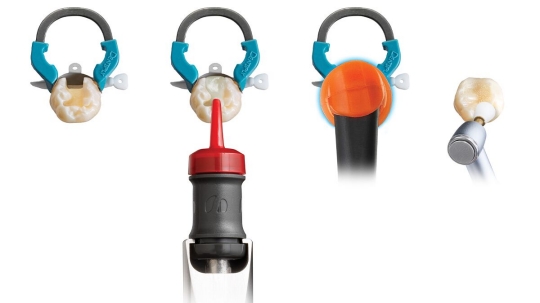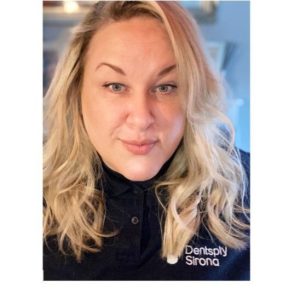A realistic alternative to amalgam
Promotional FeaturesPosted by: Dental Design 20th October 2022

Emma Cadey, National Product Specialist for Restorative, Endodontic & Preventative at Dentsply Sirona, explains why Surefil™ one self-adhesive hybrid composite offers a real alternative to amalgam for direct restorations
Since October 2013 when the Minamata Convention on Mercury agreed a global treaty to phase out the use of dental amalgam by 2030, the search for a realistic alternative has been growing at pace.
Amalgam use remains high in NHS-funded dentistry and it is the most commonly used material in NHS posterior restorations. The most common alternative is composite, which is not only more costly, it also takes longer to place and is more technique-sensitive, with a higher reported incidence of post-operative complications than amalgam.
A recent study[i] has shown that primary care clinicians have major personal and patient concerns regarding the amalgam phase-down. Many clinicians say they lack confidence using composite, especially when restoring posterior teeth in more complex cases, but confidence using amalgam is high.
In the study, a significant majority (65%) of clinicians said that the amalgam phase-out will impact on their ability to do their job, with concern about the extra time needed to place and replace alternatives, leading to an increased need for indirect restorations and more extractions. Already, 74% of UK adults have had at least one tooth extracted and 84% have a filling, with 2.4% of 5-year-old children in England having had one or more teeth extracted because of decay[ii].
The problem
Clinicians face a choice when it comes to restorative options between composite, amalgam (which cannot be used on under 16s or pregnant women), glass ionomers (GIs), resin modified GIs or extraction. While GIs are easy to place they are not indicated as a permanent restorative material due to their inferior mechanical properties. This can lead to premature failure and the need for re-treatment at the practice’s expense.
Composites require complete isolation during restorative procedures and achieving moisture control, especially when treating children, the elderly or patients with special needs, often makes successful placement of composite quite difficult.
The solution
A new alternative, that combines the simplicity of a glass ionomer with the longevity of a bonded composite, is Surefil one™ from Dentsply Sirona. This material represents a step change, being the first self-adhesive, bulk filling, composite hybrid, with the added benefit of long-term fluoride release.
Surefil one is a tooth-coloured, moisture-tolerant material that does not require any sort of external bonding mechanism or cavity conditioning; it only requires cavity preparation and filling. Its new patented MOPOS (Modified Polyacid System) technology creates a chemical bond with the tooth surface, pulling the calcium ions to the tooth, creating a bond as strong and durable as composite.
Surefil one’s self-adhesion makes etching and bonding obsolete and virtually eliminates polymerisation shrinkage that can lead to post-operative sensitivity. With Surefil one, post-operative sensitivity has been reported at less than 1%[iii]. Fewer steps in the procedure make restorative treatment faster and more efficient, ideal in situations where speed is critical, for instance when treating vulnerable patients, those with special needs or those with dental phobia.
With unlimited depth of cure there is no risk of insufficient curing, providing assurance that even in deep cavities, complete cure will be achieved without layering. It can also be light-cured so the restoration can be finished and immediately polished. And unlike GIs and amalgam, once it is light-cured it is set, meaning that patients can eat and drink immediately.
A real alternative
With over a quarter of British adults (27%) only visiting the dentist when they have a problem[iv], patient education is vital. If patients know they can have a restoration completed quickly and simply and eat and drink as normal after their appointment, this can only be a good thing. Innovative materials, like Surefil one, will encourage patients to see their dentist more regularly and perhaps choose to have restorative procedures, rather than extractions, leading to improved oral health.
In the face of a continued reliance on amalgam in NHS dentistry and the amalgam phase-out getting ever closer, finding a cost-effective, long-lasting and easy-to-use alternative is more important than ever.
Surefil one is easy to place, bonds effortlessly to the surface of the tooth and is moisture-tolerant, allowing clinicians to predictably restore teeth even in compromised clinical situations. When speed is of the essence and there is no room for compromise on performance, Surefil one is the answer – an efficient and effective alternative to a traditional Class II solution, as well as a high-performing replacement for amalgam and glass ionomers.
To find out more about Surefil one, and to access the Scientific Compendium where all the data can be reviewed, please visit dentsplysirona.com/surefilone
dentsplysirona.com
Facebook: @dentsplysirona.uk
Twitter: @DENTSPLY_UK
Instagram: @dentsplysirona.uk

Emma Cadey
About the Author
Emma Cadey is Dentsply Sirona National Product Specialist for Restorative, Endodontic & Preventative
References:
[i] Amalgam Phase-Down: UK-Based Posterior Restorative Material and Technique Use 2020
- Bailey, C.R. Vernazza , S. Stone, L. Ternent, A.-G. Roche, C. Lynch
[ii] https://www.dentaly.org/en/dental-facts-statistics/
[iii] Dentsply Sirona internal data
[iv] https://www.dentaly.org/en/dental-facts-statistics/









